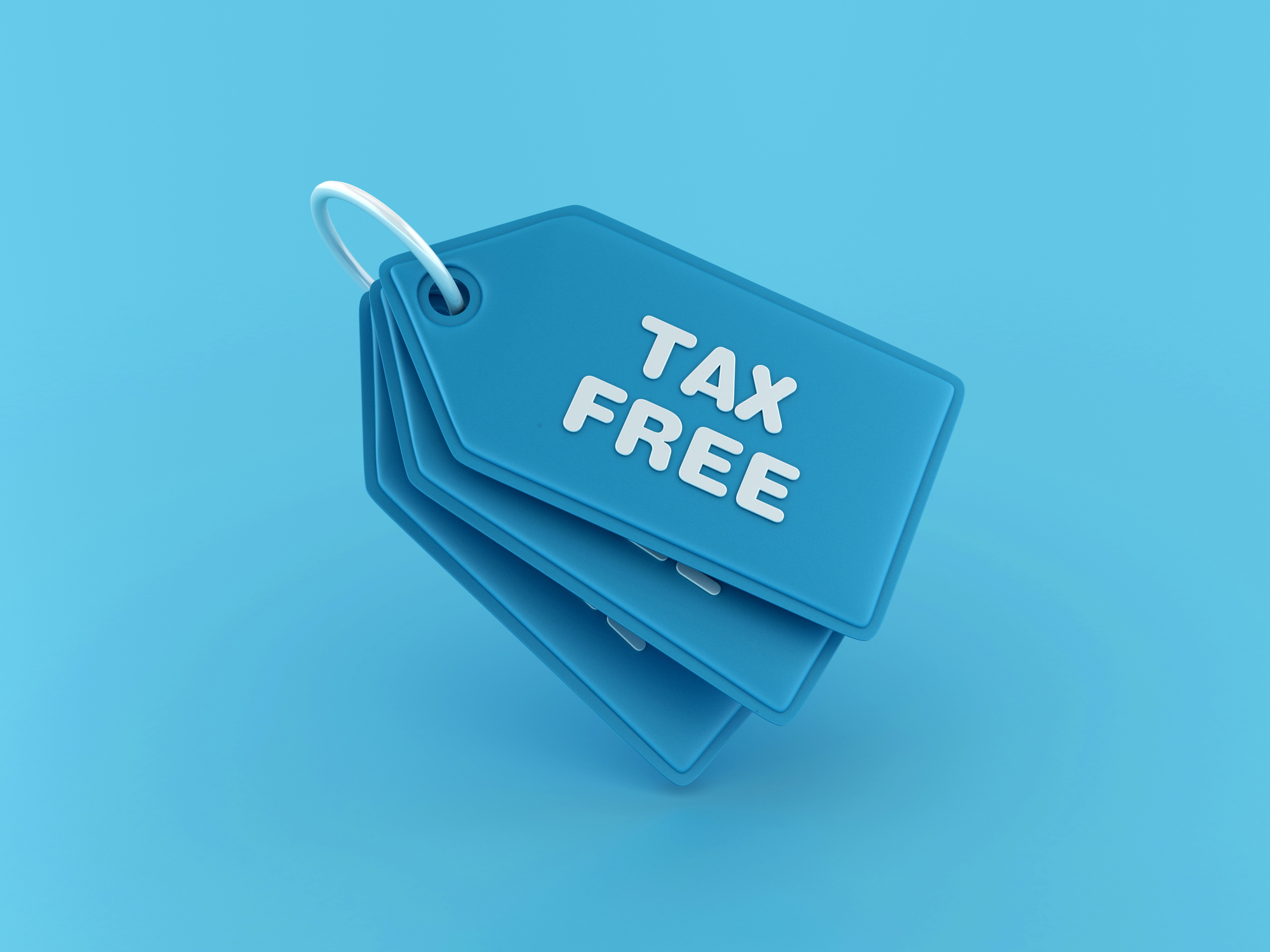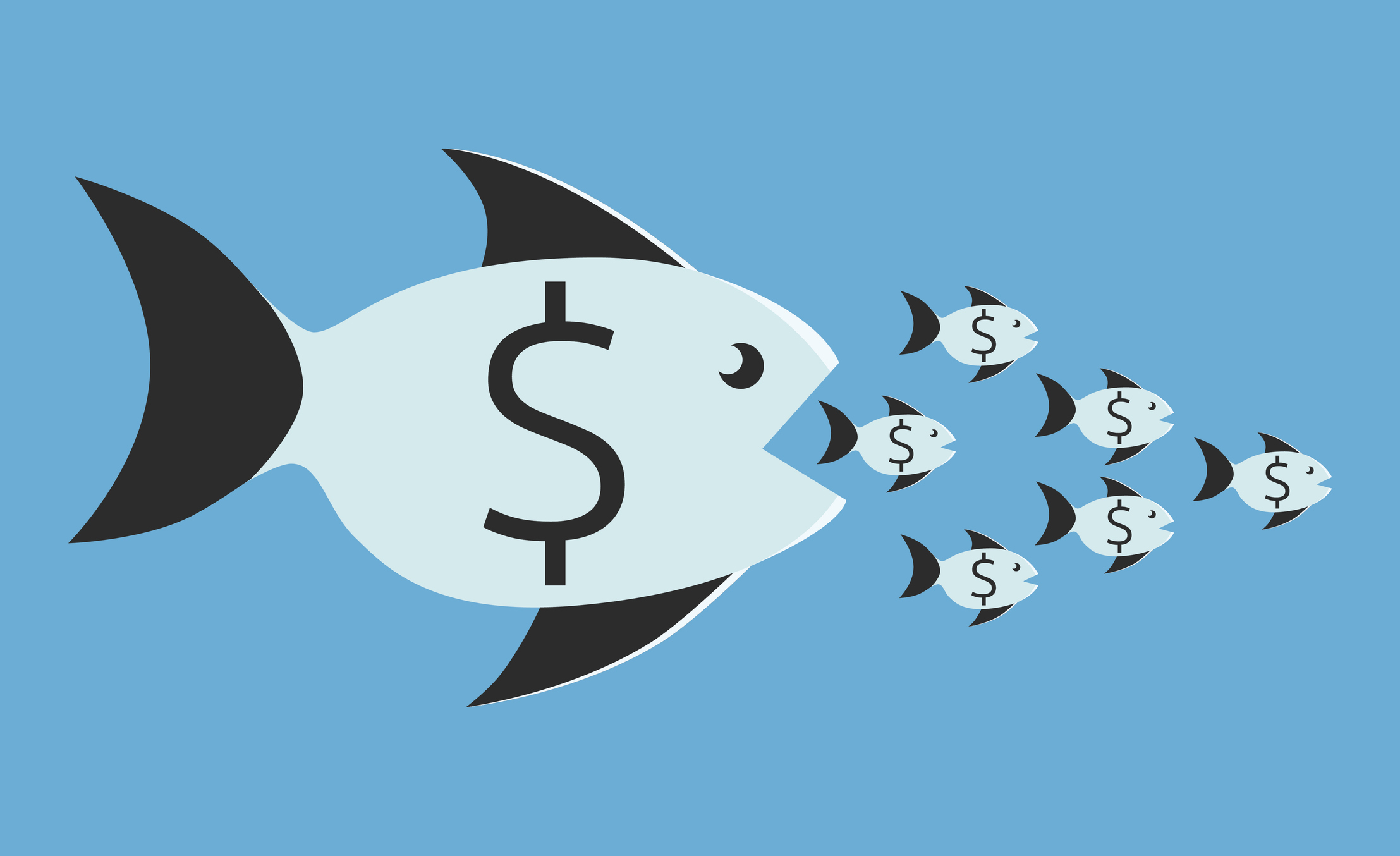Only Five States Offer No Sales Tax
Is your state’s ban on sales tax actually saving you money? Probably not as much as you might think.


As if prices for goods and services weren’t high enough, most state and local governments also impose a sales tax.
Sales tax is a key revenue tool used to ramp up general funds for essential government programs like public education, police and fire departments, parks, and medical facilities. Together, state and local sales taxes can range anywhere from 0% to as high as 9.56%, according to data from the Tax Foundation.
Just as some states are income tax-free, a handful of states don’t levy a general state sales tax at all. Still, that doesn't mean you're in for a "free lunch" from a tax perspective.

Sign up for Kiplinger’s Free E-Newsletters
Profit and prosper with the best of expert advice on investing, taxes, retirement, personal finance and more - straight to your e-mail.
Profit and prosper with the best of expert advice - straight to your e-mail.
That's because while some states and localities opt out of taxing sales, residents often face a higher tax burden from other sources (like income or property taxes).
So before we celebrate your sales tax savings at the check out, let’s dive into other areas in states with no sales tax where you could see your tax burden rise.
What is sales tax?
Sales tax is imposed on goods and services at the point of sale. When you look at your receipt, you’ll notice that the tax levied is a percentage of the purchase price of your service or product and added to your total bill amount.
According to the Tax Foundation, the taxes levied at the point of sale generate a third of state tax revenue on average and are a significant resource to the 45 U.S. states that currently impose them. As mentioned, sales taxes can also function as a funding stream for local governments in some states.
How high can state and local sales taxes go?
Sales taxes can climb substantially depending on your location. As Kiplinger has reported, the states with the highest sales taxes in 2024 are Louisiana, (9.56%), Tennessee (9.55%), Arkansas (9.45%), Washington (9.38%), and Alabama (9.29%).
What exactly can be taxed? Just about anything you purchase.
- Clothing
- Furniture
- Dry cleaning
- Electronics, and more.
And yes, in some cases, even resale items (like those from thrift stores) can be subject to a sales tax. Although there are some point-of-sale exemptions, such as the purchase of goods and services by state and local governments or nonprofits can be tax-free.
Occasionally, states also offer sales tax holidays during back-to-school seasons or for disaster preparedness.
Overall, the average taxpayer can expect to pay over $1,100 per year in retail sales taxes each year.
States with no sales tax

The following states without sales tax are listed in alphabetical order. Also keep in mind that while some of these states have no statewide sales tax, some localities can add their own sales tax.
1. Alaska
Before you pack up your bags and move to The Last Frontier State, you should know that while Alaska is one of the five states that does not impose a sales tax, local governments have the authority to institute a sales tax.
Alaska has largely depended on the extraction of gas and oil to sustain its economy, making up nearly 85% of its state revenue. Other important industries include timber, mining, agriculture, fishing and tourism, according to the state government.
Last year, Gov. Mike Dunleavy proposed a statewide sales tax of 2% as part of his plan to reform the state’s tax system. However, state lawmakers haven’t moved forward with the proposal.
Local tax:
Although Alaska doesn’t impose a statewide sales tax, local governments can levy taxes at the point of sale. According to the Tax Foundation, folks can expect to be taxed up to 7.85% depending on their location.
The state government allows local municipalities to institute retail taxes because while property tax can be a prime revenue source for some communities — smaller municipalities may not have enough of a resident base to support local funds.
Property tax:
Significant areas of Alaska don’t have property taxes, but the municipalities that do aren’t allowed to levy a property tax that exceeds 3%, per the state of Alaska.
Those that don’t levy a property tax include:
- Northwest Arctic Borough
- Kusilvak Census Area
- Copper River Census Area
Income Tax:
As a bonus, Alaskans don’t pay income tax. That makes the state one of the few states with no income tax as well.
2. Delaware
Delaware has no state or local sales taxes, making it a tax-friendly choice for residents and visitors alike. It’s worth noting that, in response, New Jersey halved its sales tax rate to a reduced rate of 3.3% on certain items sold in businesses located in Salem County — right along Delaware’s border.
Not every item sold in Salem County will be taxed at half the rate, but you can get a tax break on some items (including but not limited to):
- Books and stationery
- Furniture and carpeting
- Business supplies
- Computer hardware and appliances
Property tax:
Property taxes in Delaware are among the lowest in the country at just 0.61%, according to the latest Tax Foundation data. For a household with an average property valued at $337,200, their property tax bill is just a little over $1,300.
3. Montana
There is no statewide sales tax in Montana, but you can run into some taxed items depending on where you’re visiting. That’s right, local municipalities that are popular with tourists can impose a resort sales tax no higher than 3%, according to the Sales Tax Institute.
These locations can also levy sales taxes on base rental charges on campgrounds or rental vehicles.
Where can you run into a local sales tax? Some locations include:
- West Yellowstone
- Whitefish
- RedLodge
- Big Sky
Income tax:
As for income taxes, Montana residents can expect a graduated tax rate which ranges from 4.70% to 5.90% depending on your income, data from the Tax Foundation showed.
Property tax:
For homeowners in Montana, the average property tax rate is 0.74%. That means the typical household with a median-priced home of $221,200 can expect to pay roughly $1,634 in property taxes each year.
4. New Hampshire
The Granite State doesn’t impose any statewide sales taxes, nor does it impose any local taxes in this regard. What’s more, residents don’t have to pay any income tax (well, for the most part).
New Hampshire currently imposes a 4% tax on dividends and interest, which will phase down to 3% after 2024, and is scheduled to be eliminated in 2025.
So how does New Hampshire build revenue? Well, the state leans heavily on property taxes to come up with cash to fund its state and local government programs and services.
Property tax:
New Hampshire’s property taxes are 1.93%, marking them one of the states with the highest taxes. That means a homeowner with a median-priced home at $434,700 can expect to pay a whopping $8,389 in property taxes each year.
5. Oregon
The Beaver State doesn’t impose a statewide sales tax, but it does have some restrictions when it comes to your vehicle.
Oregonians who purchase a new vehicle out-of-state will have to pay a vehicle use tax, which will be one-half of 1% due on the retail price of the taxable vehicle.
Local tax:
Though the state of Oregon doesn’t impose a general sales tax, local governments can institute a sales tax.
Income tax:
Aside from potentially facing a local sales tax, state residents have to pay among the highest income taxes in the country. Oregon has a graduated state individual income tax, with rates that range from 4.75% to 9.9%, per the Tax Foundation.
Property tax:
Oregon’s property taxes stood at 0.93%, which can still pile on a bit to your tax bill. Homeowners with a typical property valued at $191,700 can expect to pay about $1,786 in property taxes annually.
State without sales tax and your overall tax burden
Depending on where you live, states and local governments impose taxes to collect crucial funds for essential services like transportation, road repairs, public schools, and police and fire districts, to name just a few.
While only the five states mentioned above offer a tax break on sales tax, as a resident or local business owner you may face higher taxes in other ways, like
- Property tax
- Corporate tax
- Income tax
The overall tax burden can be a dealbreaker, in some cases, for folks looking to relocate.
Related Content:
Get Kiplinger Today newsletter — free
Profit and prosper with the best of Kiplinger's advice on investing, taxes, retirement, personal finance and much more. Delivered daily. Enter your email in the box and click Sign Me Up.

Gabriella Cruz-Martínez is a seasoned finance journalist with 8 years of experience covering consumer debt, economic policy, and tax. Before joining Kiplinger as a tax writer, her in-depth reporting and analysis were featured in Yahoo Finance. She contributed to national dialogues on fiscal responsibility, market trends and economic reforms involving family tax credits, housing accessibility, banking regulations, student loan debt, and inflation.
Gabriella’s work has also appeared in Money Magazine, The Hyde Park Herald, and the Journal Gazette & Times-Courier. As a reporter and journalist, she enjoys writing stories that empower people from diverse backgrounds about their finances no matter their stage in life.
-
 Tax Day 2025: Don’t Miss These Freebies, Food Deals and Discounts
Tax Day 2025: Don’t Miss These Freebies, Food Deals and DiscountsTax Day You can score some sweet deals on April 15 in some select restaurants like Burger King, Shake Shack, and more.
By Gabriella Cruz-Martínez
-
 Registered Social Security Analyst: The Retirement Professional You Didn’t Know You Needed
Registered Social Security Analyst: The Retirement Professional You Didn’t Know You NeededThe services of a Registered Social Security Analyst (RSSA) are often overlooked. Yet, for those planning for retirement, nearing or already retired, an RSSA can be an invaluable resource.
By Donna LeValley
-
 Tax Day 2025: Don’t Miss These Freebies, Food Deals and Discounts
Tax Day 2025: Don’t Miss These Freebies, Food Deals and DiscountsTax Day You can score some sweet deals on April 15 in some select restaurants like Burger King, Shake Shack, and more.
By Gabriella Cruz-Martínez
-
 Tax Time: Does Your Kid Influencer Owe Taxes?
Tax Time: Does Your Kid Influencer Owe Taxes?State Tax Some minors are making big money on social media. Here’s how to know if they need to file taxes.
By Gabriella Cruz-Martínez
-
 Did Florida’s Chance at $1,000 in Property Tax Rebates Vanish?
Did Florida’s Chance at $1,000 in Property Tax Rebates Vanish?State Taxes The Florida Legislature bypassed Gov. Ron DeSantis’ wish to cut property taxes and instead voted to lower the state’s sales tax.
By Gabriella Cruz-Martínez
-
 How Caregivers for Adults Can Save on Taxes in 2025
How Caregivers for Adults Can Save on Taxes in 2025Tax Breaks Caring for your parent or spouse can be stressful, but the IRS offers tax breaks for qualifying taxpayers. Here they are.
By Kate Schubel
-
 New South Carolina Income Tax Cut Might Eat Your Cash
New South Carolina Income Tax Cut Might Eat Your CashState Taxes South Carolina’s flat income tax bill could have the majority of residents paying higher income taxes. Find out how.
By Kate Schubel
-
 Tax-Deductible Home Improvements for Retirement in 2025
Tax-Deductible Home Improvements for Retirement in 2025Retirement Taxes Your aging-in-place plan could benefit from the medical expense tax deduction. But watch out for capital gains and property taxes.
By Kate Schubel
-
 New Colorado Tax Credit: What’s the Scoop?
New Colorado Tax Credit: What’s the Scoop?State Tax Everything you need to know about the Colorado family affordability tax credit in 2025.
By Kate Schubel
-
 Key Family Tax Breaks Are on the GOP Chopping Block This Year
Key Family Tax Breaks Are on the GOP Chopping Block This YearTax Credits Several tax breaks, including the Child Tax Credit, may face reforms or be cut entirely as lawmakers seek revenue for Trump’s tax plans.
By Gabriella Cruz-Martínez